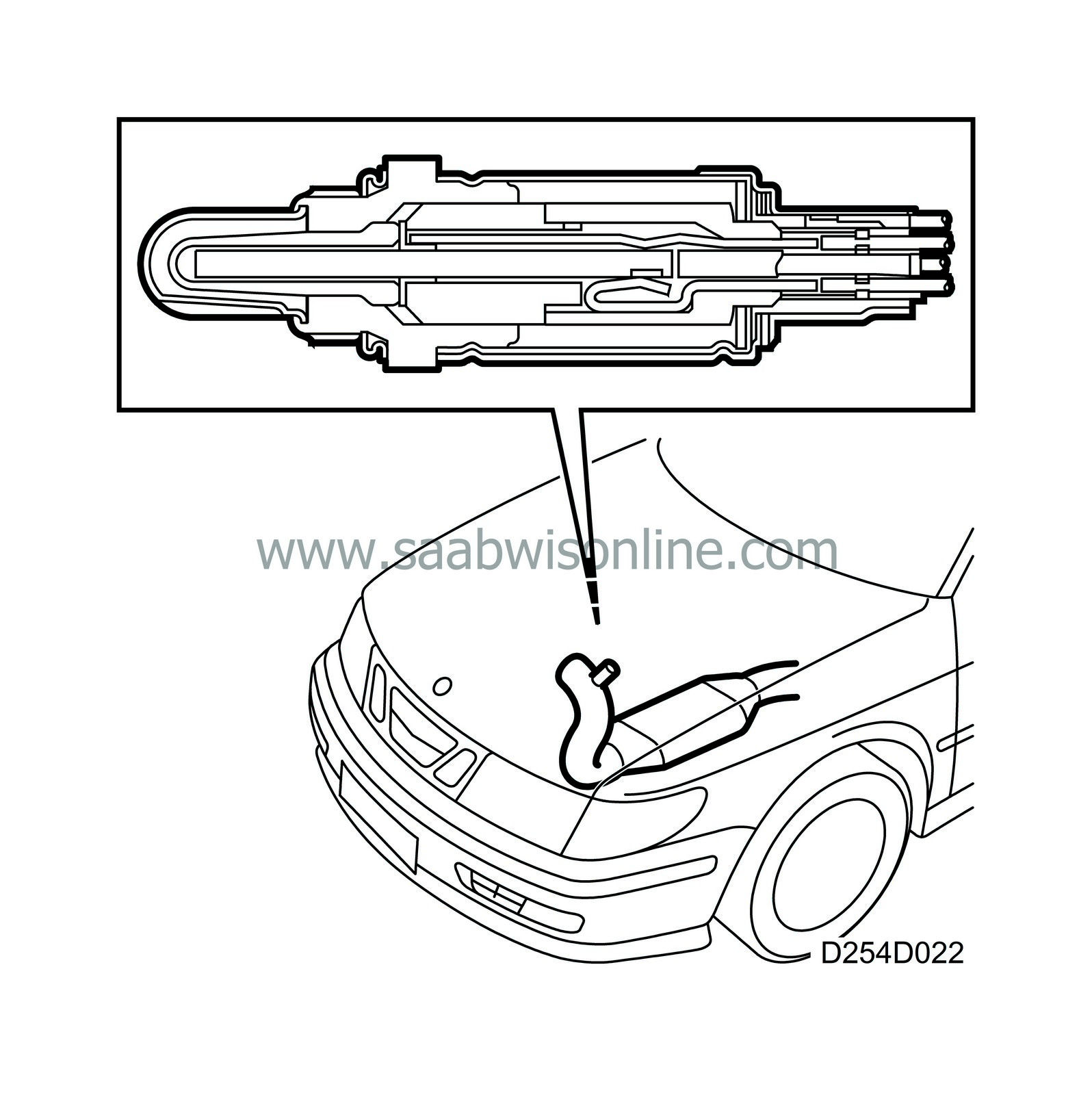Closed loop fuel injection system
| Closed loop fuel injection system |
| General |
The system is controlled electronically with two oxygen sensors located in the exhaust pipe in front and behind the front catalytic converter. The car has two catalytic converters containing ceramic or metallic substrates. The walls of the substrates are covered with a catalyst, platinum and rhodium. The catalytic converters have a high degree of conversion within a very narrow range. If the fuel-air mixture is not maintained within this range, one or more gases will inevitably exceed permitted limits. A closed loop fuel injection system guarantees that the fuel-air mixture is always correct.
Provided the closed loop fuel injection system delivers an optimum fuel-air ratio, in which carbon monoxide (CO) and hydrocarbons (HC) are oxidized, the catalytic converter will also be able to reduce the amount of nitrogen oxide (NOx). The final products will then be carbon dioxide (CO 2 ), water (H 2 O) and nitrogen gas (N 2 ). The car must be fuelled with unleaded petrol if the catalytic converters are to be able to reduce emissions. This is because lead will destroy the active components in the catalytic converter.
| Oxygen sensor |

The oxygen sensor comprises a primary cell with a solid electrolyte. The electrolyte consists of a tube of ceramic zirconium oxide with concave ends and its temperature is stabilized by the addition of a small amount of yttrium oxide. Its surface is coated with titanium and therefore conducts electricity.
When the motor runs on a lean mixture the oxygen content of the exhaust gases increases. The oxygen sensor voltage then drops and the engine control module reacts by extending the injection time. At a closed-loop value of 1.0 the voltage is about 0.45 V.
The oxygen sensors are effective only when their working temperature exceeds 600°C (1120°F) and are therefore provided with electric pre-heating. The pre-heating on cars with TRIONIC is controlled by the control module. A relay has been used on certain markets to disconnect the pre-heating when the engine speed exceeds 3000 rpm as the oxygen sensors are then heated by the exhaust gases. The output signal diminishes with the age of the oxygen sensors and the sensors must therefore be changed after 160 000 km (100 000 miles).



